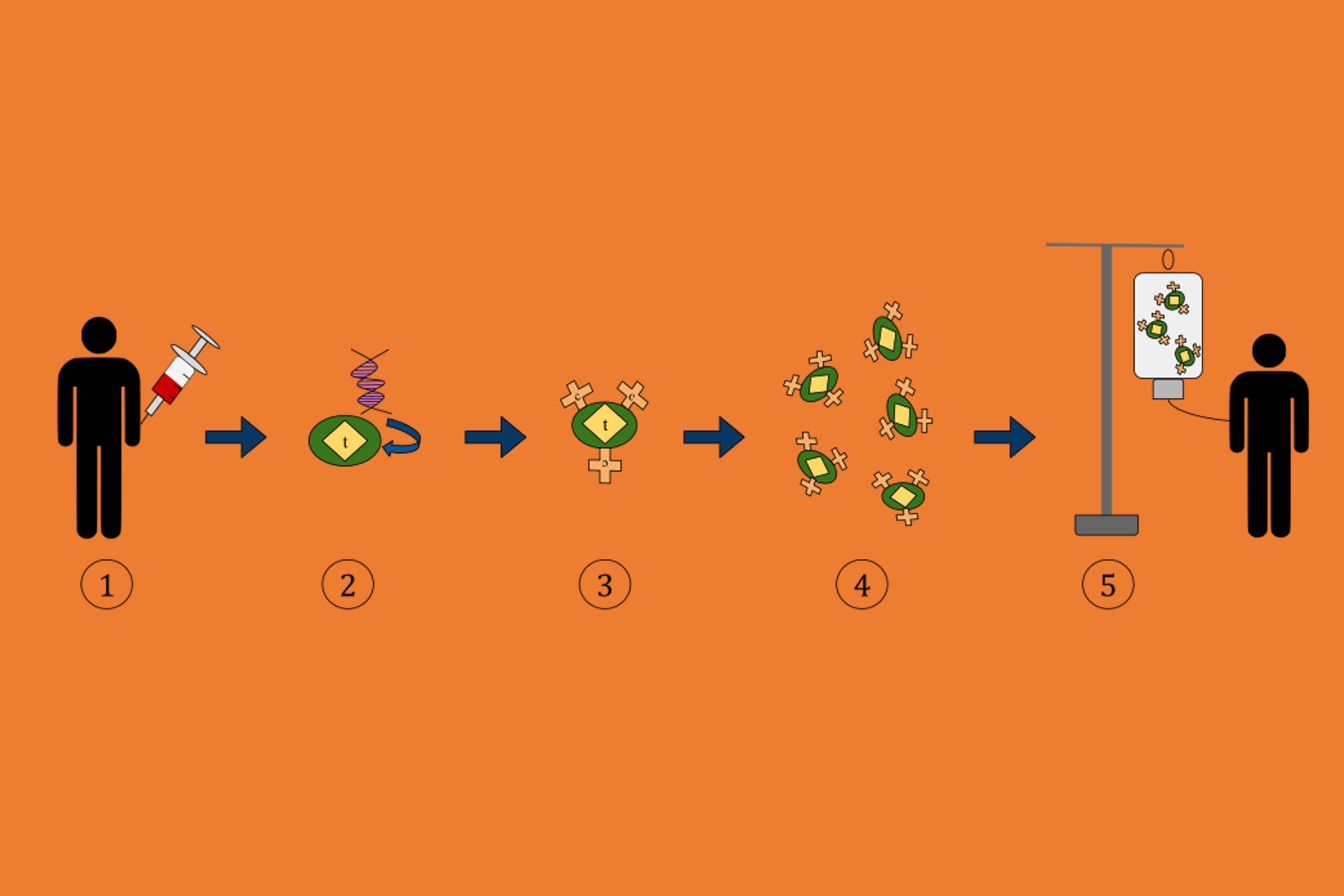Cytokine decorated CAR-T cells

Adoptive T cell therapies such as CAR-T cells have proven effective in treating some leukemias but have struggled to be useful in solid tumours. A recent study reported in PNAS explores a way of easily functionalizing adoptive cells so that they become decorated with a cytokine of choice. In the melanoma mouse model tested, this approach led to significantly improved efficacy.
What is adoptive cell therapy?
Adoptive therapies use immune cells taken from a patient which are then manipulated in a laboratory setting and then re-administered to provide an improved immune-therapeutic benefit to the patient. They are a kind of autologous cell therapy. Over the last decade, CAR-T cells, in particular, have become widely used and generate improved clinical outcomes for patients with leukaemia.
What are CAR-T cells?
Killer T cells are cells that attack and kill other cells such as cancer cells. They do this by releasing enzymes such as granzyme. T-cells can more effectively target cancer cells if they have an antibody on their surface that allows them to attach to target cells. CAR-T cells are killer T cells that have been manipulated to using genetic engineering techniques, such as CRISPR/Cas9 to express an antibody on their surface specific to a target identified in the patient’s cancer cells.
The goal of the research
The impact of CAR-T cells on solid tumors has been limited. There have been a number of reasons suggested for this including failure of the cells to infiltrate the tumors, poor T cell perseverance and immunosuppression within the tumor microenvironment (TME). The researchers in David Maloney’s lab at Harvard University, developed an elegant strategy to improve the therapeutic cells performance in solid tumors.
After immune cells are taken from a patient, the research team cultured them in a media which contains an unnatural azido sugar. The azido sugar becomes incorporated into the cell membrane. The researchers than incubated these cells with cytokines which were fused to an affinity tag which bound to the azido sugar on the cell surface. By doing this the researchers were able to co-deliver specific cytokines with the cells.
Why decorate the cell surface with cytokines?
Many cytokines are known to be immuno-stimulatory. However, they suffer from significant toxic side effects. By decorating the surface of the cellular therapeutic with these cytokines, the researchers were aiming to generate a combination therapeutic effect with a much smaller dose of cytokines.
The researchers studied T cells decorated with IL-12 against sub-cutaneous melanomas. They found that even at doses less than 1/10th of those normally needed to achieve a therapeutic effect the combination therapy worked much more effectively than the controls.
The findings of this study are similar to our own study using PODS to functionalize phagocytic immune cells with cytokines including IL-2, IL-15 and IFN-gamma. Both of these studies point to the promise of combination cellular therapies.
IMAGE: CAR-T cell production and therapy. ReyaSINGH
Learn more about powerful technologies that are enabling research:



